Characteristics
- Occupation of small space
The method provides a more economical shape with smaller unnecessary space in the flat cross section in railway and highway tunnels than circular shield tunneling methods. - Construction of tunnels of vertical and horizontal Double circular cross sections
Flexible design is possible according to the surrounding environment and other conditions because combinations of tunnels can be constructed of horizontal and vertical Double circular cross sections. - Positioning of cutters in the same plane
Cutters of different shield machines in the same plane make cutting torques to balance and facilitate the control of driving of the shield machines. - Reduction of total cost
Selecting an economical cross section enables the reduction of space occupied by shield machine and of construction depth, which leads to reduction of total cost.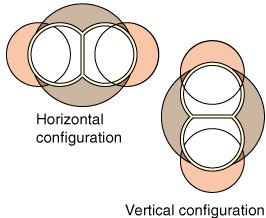
Mechanism of tunnel driving
The Dot Tunneling Method is applied for an earth pressure shield machine with interlocking spoke-equipped multiple cutters that are positioned in the same plane to construct tunnels of double or triple cross sections.
- Synchronous control of cutters
Adjacent cutters rotate in the opposite directions to avoid touching or smashing one another and are thus controlled synchronously. - Rolling control
Rolling of the shield machine is controlled by component force of thrusting jack by shifting along the circumference of the machine, and rolling control jacks placed on the longer sides of the machine.

- Erector
The DOT shield machine is equipped with cantilever-arm-type erector to erect joint and panel segments, so it provides wide working space.
Applications to actual tunneling
DOT shield tunneling in the Rijo section of the
Hiroshima Astram line (new transportation system)
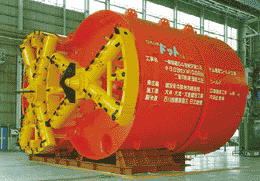
Cross section: 10.69 m wide and 6.09 m high
Length: 850 m
Overburden: 8.3 to 5.0 m
Soil type: Silty sand, silt and clay
Construction of a curved section of the Hiroshima Astram
line (new transportation system) (radius: 135 m)
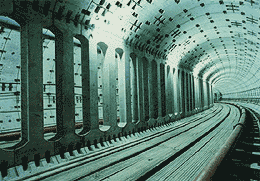
Phase-3 construction of Kikuta-gawa main sewer No. 2
in Narashino City
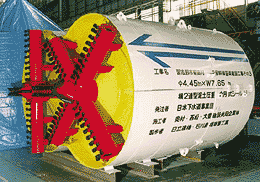
Cross section: 7.65 m wide and 4.45 m high
Length: Upstream: 117 m
Downstream: 586 m
Total: 703 m
Overburden: 9.9 to 2.15 m
Soil type: Fine sand, cohesive soil and humus
Construction of a utility conduit in the Ariake-kita district in
the Tokyo metropolitan area

Cross section: 15.86 m wide and 9.36 m high
Length: 249 m
Overburden: 13.5 to 17.5 m
Soil type: Diluvial cohesive soil and gravel in buried terrace
Construction of the Chayagasaka section of Nagoya
municipal subway line No. 4
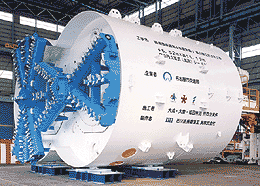
Cross section: 11.12 m wide and 6.52 m high
Length: 1,007 m
Overburden: 11.5 to 32.1 m
Soil type: Sand and cohesive soil

